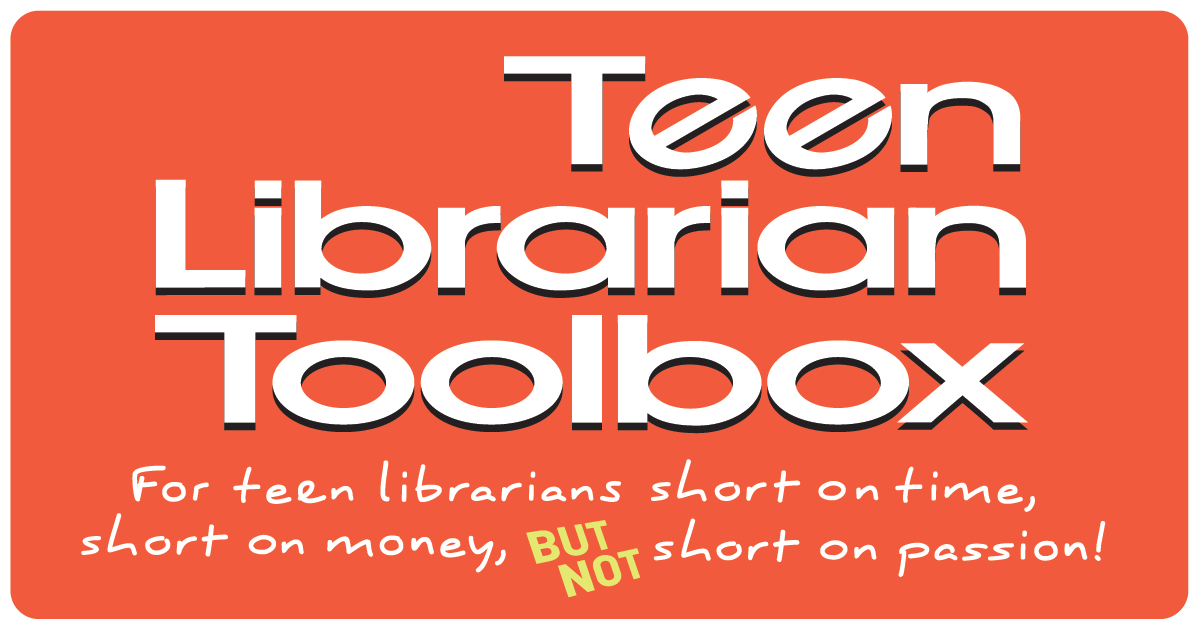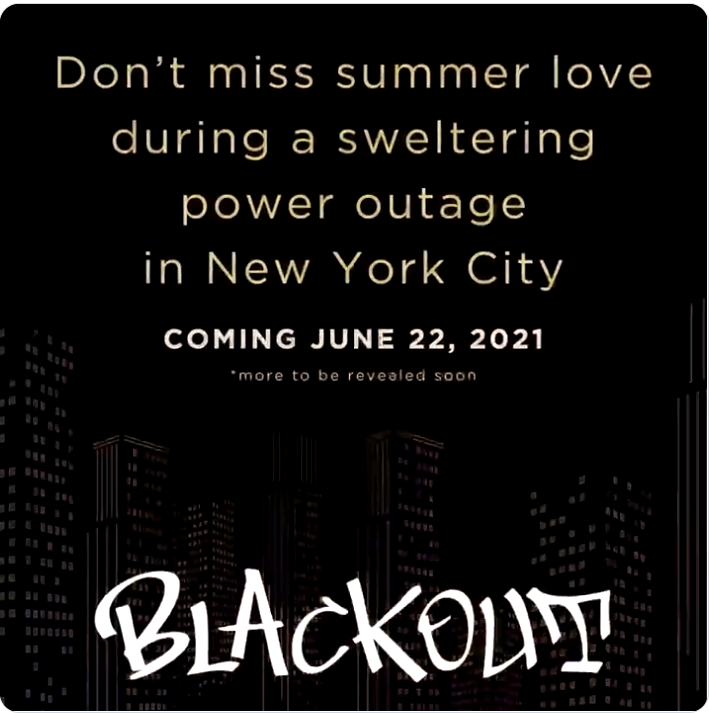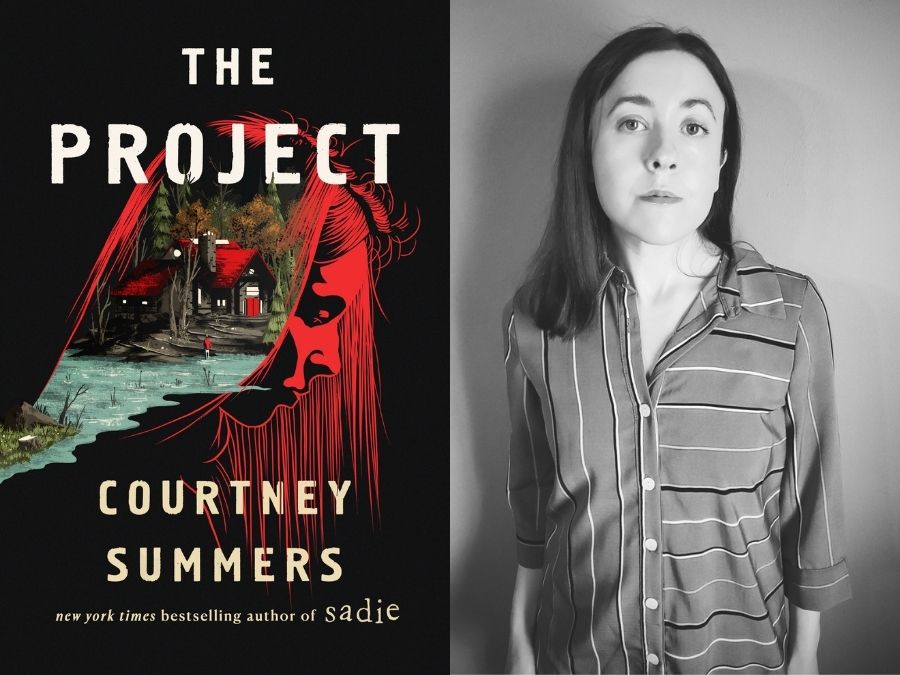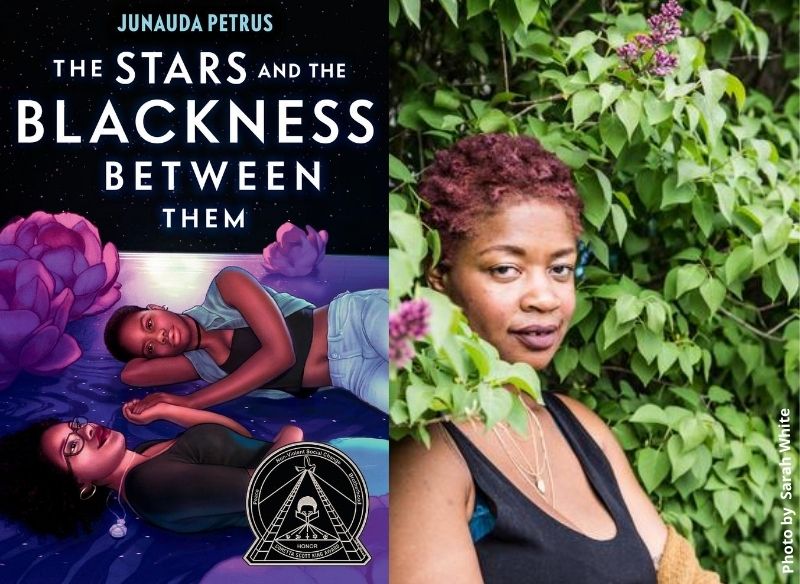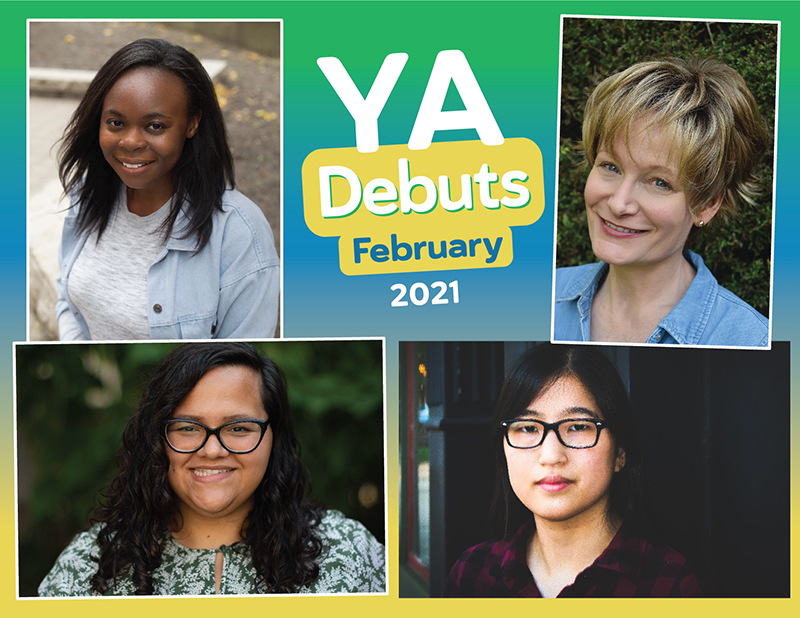Making a Graphic Novel from Start to Finish, a guest post by Kate Wheeler

I have a very specific memory from middle school where we were asked to present on our Dream Occupation for the school job fair (starting us on that capitalism track early) and I chose “Disney Animator.” It wasn’t because I particularly loved Disney or the idea of animating; I just really loved drawing and storytelling. But at that time in the late 90’s the job of “cartoonist” wasn’t a present or visible option for me. I had never met a cartoonist and even if I knew the word, it more represented the creator of a boring New Yorker gag comic that made my dad chuckle, or a long running Sunday comic about a fat cat who loves pasta. Now, the possibilities are endless for what stories we can tell through comics, and I have the real pleasure of visiting classrooms and bookstores and showing kids that anyone can be a cartoonist.
When I was approached by Holiday House to create an 80-page graphic novel about the history of sustainability, my excitement was a bit tempered by the knowledge that comics (though very fun and often quick to read) can be a real labor of love! Each stage of the process would take months, not to mention that Team Trash: A Time Traveler’s Guide to Sustainability would be based on real events and places and would require a lot of careful research.
ADVERTISEMENT
ADVERTISEMENT
It can seem really daunting, but I like to tell myself making comics is like eating a big slice of cake: enjoy it one bite at a time. Making comics is fun, and I thought I would give you a little insight into how “the cake” is made. Disclaimer: This is my own specific “recipe” and other cartoonists might have a completely different one! I created Team Trash completely digitally, from start to finish. I used my iPad and a program called Procreate. For inking and coloring I moved over to Photoshop.
Step One:
Research and idea mode. This is the stage where nothing is a bad idea, and there’s no pressure to get it right the first time. I like to go for a walk or hang out with friends, pitch some ideas at them and see how they react. In Team Trash there’s a specific story from my friend’s childhood experience at the science fair. When you limit your storytelling to your own experiences it can be hard to come up with anything that feels fun or new. This is the stage where I find the big beats of a story.
Step Two:
Writing. It’s time to write the script and fill in those big beats with specificity. A comic script looks a lot like one for the movies or tv, but with more detail for me about how things will look.
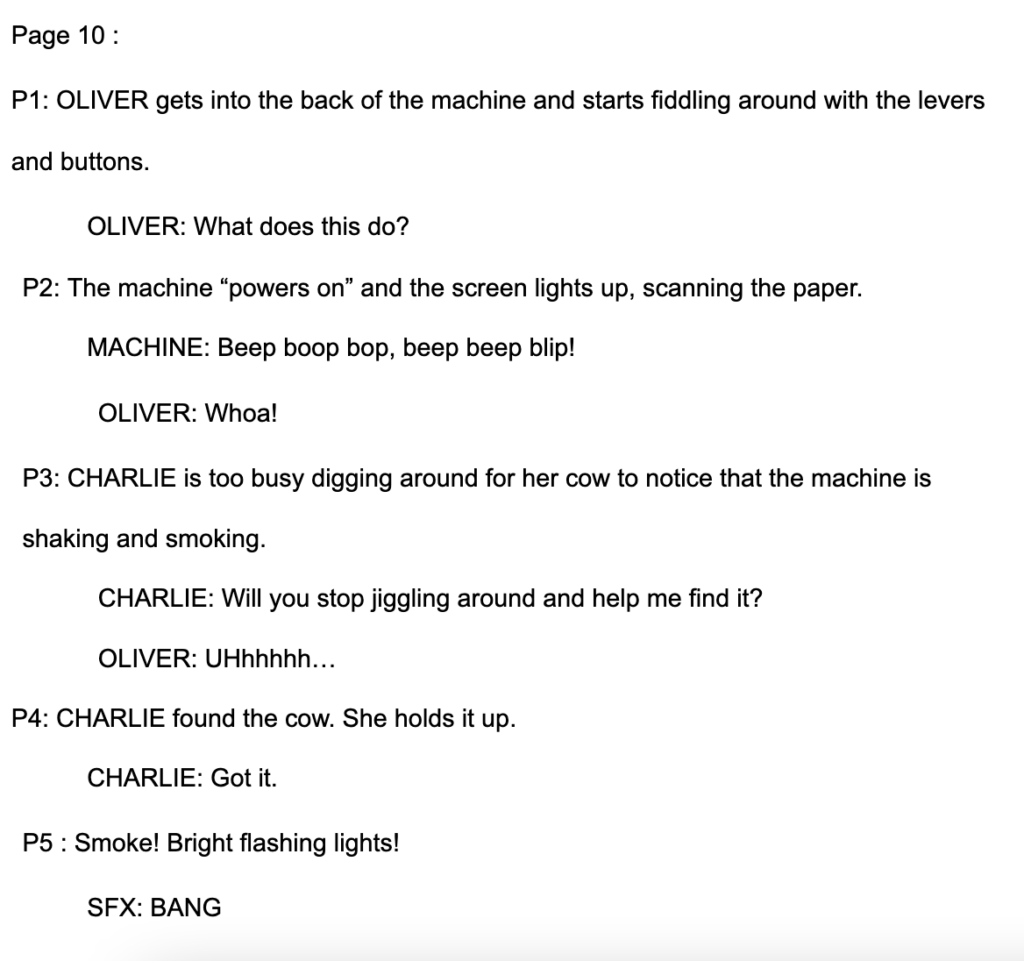
Step Three:
Thumbnailing. This is where I draw a very small sketch of each page. I keep it small because this stage isn’t about how well I can draw: it’s to see where everything is going to go. It requires a lot of thinking and staring. Does it make sense to have that speech bubble there? Would it be funnier to see him fall into the bucket? How many panels do I need to show that action? Can I fit all the text on the page, or do I need to make some edits? It’s a very THINKY part of the process and I breathe a sigh of relief when it’s over.
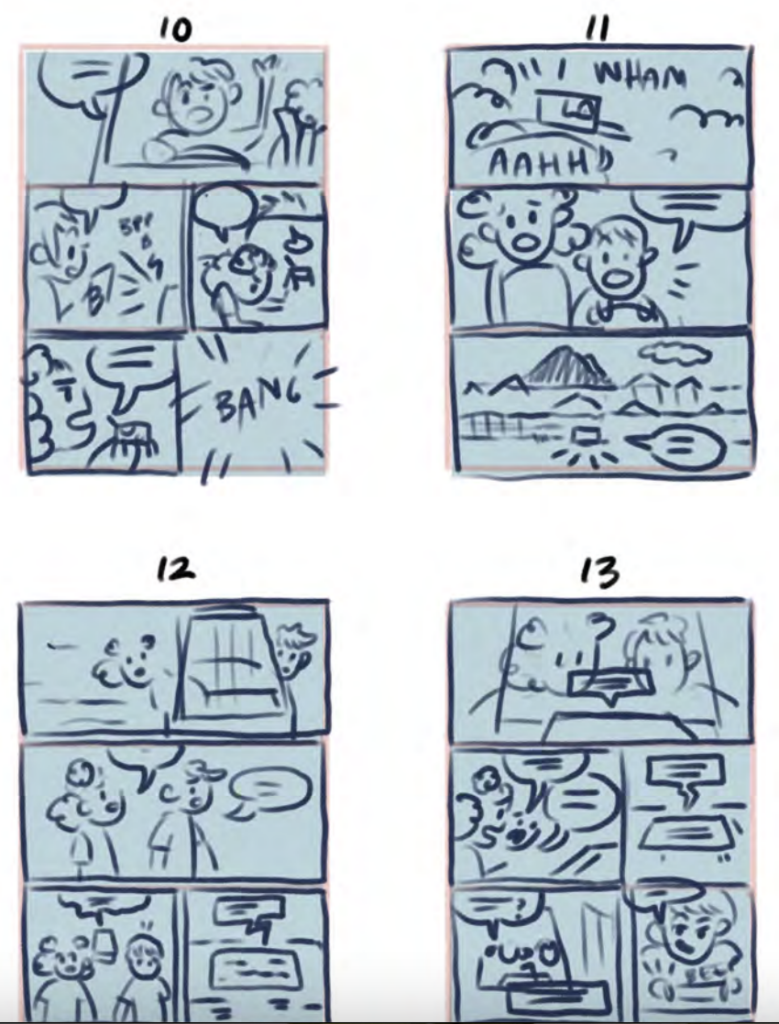
Step Four:
Pencils. This is where I really start to have fun with the book and the characters come to life. I’ve done all the heavy lifting in the thumbnailing portion and now I finally get to draw!
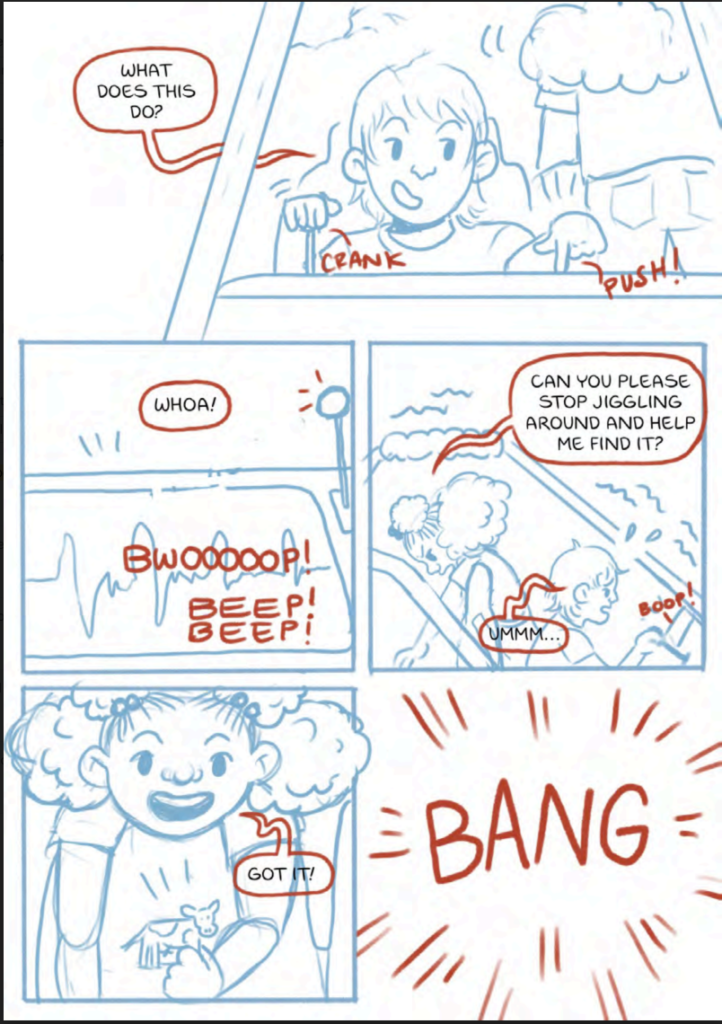
Step Four:
Inks and lettering. I inked Team Trash on Procreate, which allowed me to put a layer above the pencils layer where I could reference them. Inking is really enjoyable because it’s about the little details and really enjoying the art. I add in the text and speech bubbles and make sure it’s a good round shape and not wonky or stretched. This is also where I can turn my brain off and listen to podcasts!
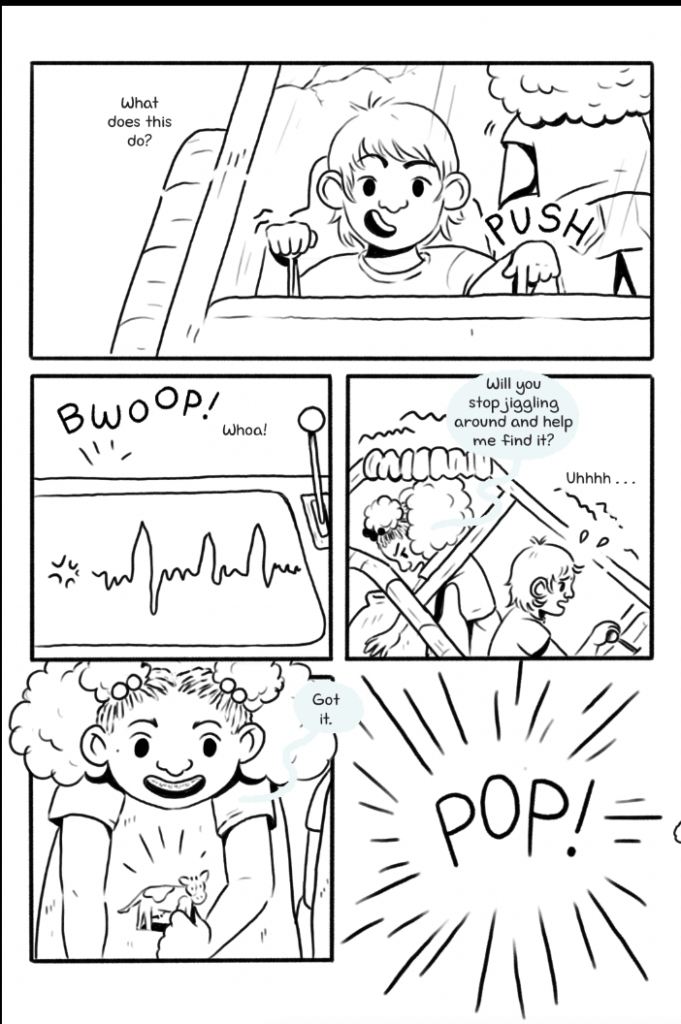
Step Five:
Coloring. There is A LOT that goes into coloring that I won’t cover here (It could have its own blog post quite frankly) but in a nutshell: Now I get to place color in all those lines I put down!
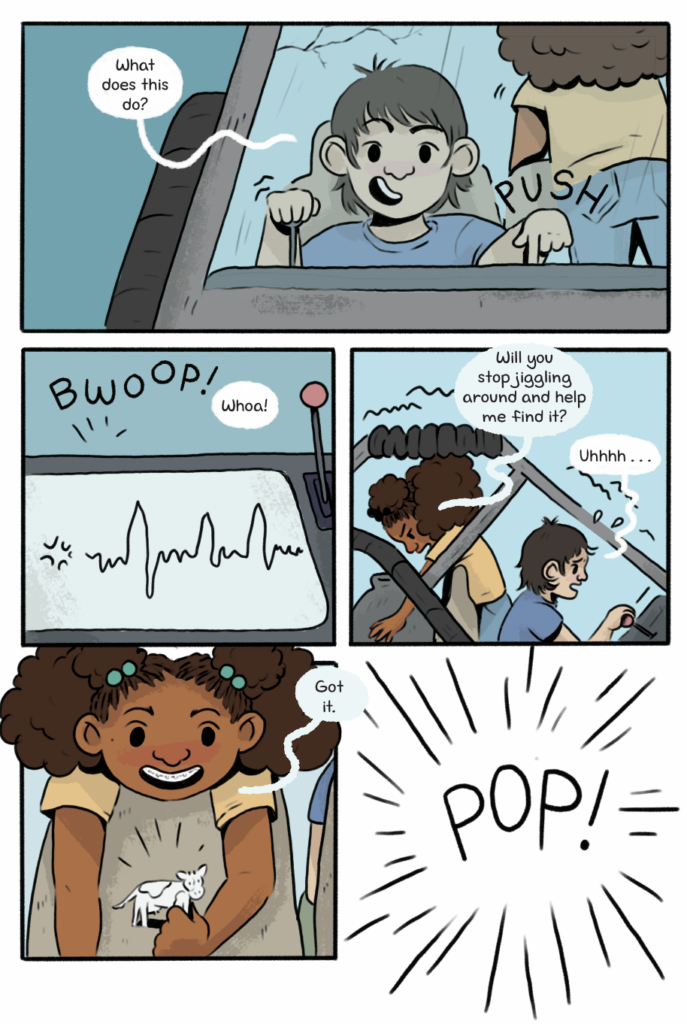
Step Six:
Waiting. Send it off to the publisher and wait for what seems like one million years to see it in libraries and bookstores! During this time our book was edited, traveled to the printers, made its way across the ocean on a giant boat, and I’m sure had a lot of adventures I’m completely unaware of! But sometime later, I opened a VERY HEAVY box on my porch and saw it for the first time: my book. There’s no feeling quite like it.
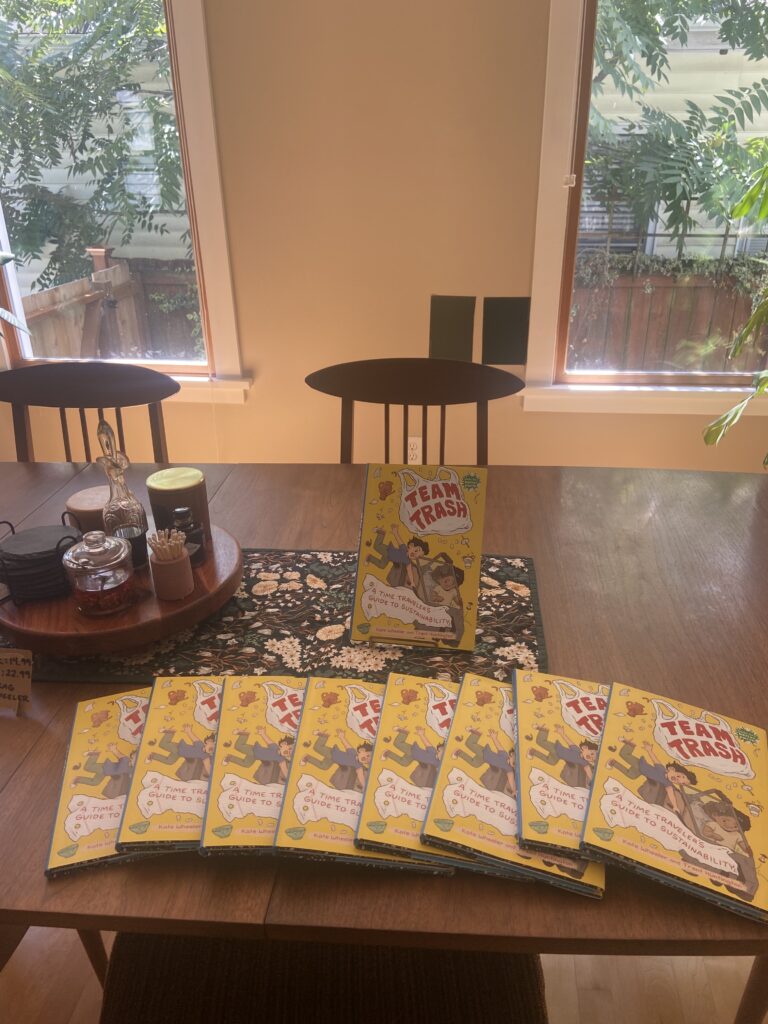
I know it seems like it’s a crazy amount of work for 80 pages, but I think comics are the perfect medium for information, non-fiction or otherwise. As someone who loves to make AND read comics, I’m a little biased, but I think reading a story where you can appreciate the artwork, writing, and storytelling simultaneously is very special. I hope that this post can shared as a helpful step by step for young readers and inspire them to create their own comics.
Meet the author
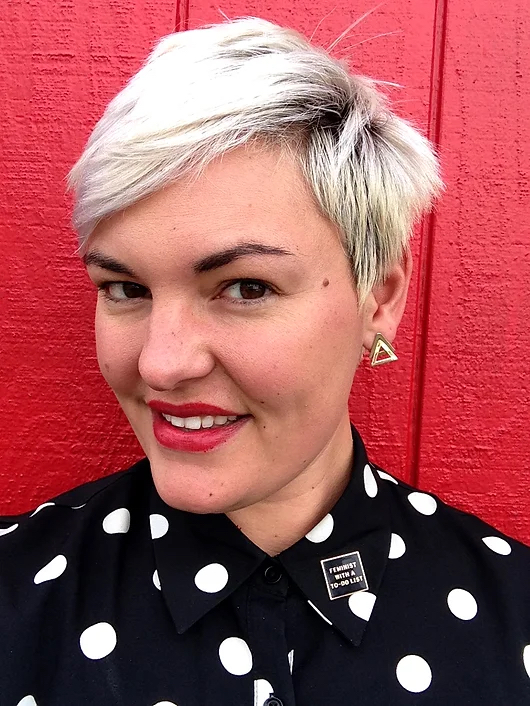
Kate Wheeler is a cartoonist from Seattle currently living in Amsterdam with her partner and their two dogs. She’s been making comics full time for almost ten years with work in The Washington Post, NPR, The Nib, and The American Library Association to name a few. Kate loves reading comics almost as much as she loves making them.
Social Media: @kagwheeler
About Team Trash: A Time Traveler’s Guide to Sustainability by Kate Wheeler, Trent Huntington
When a science project goes awry, two student activists travel through time to learn how to protect our Earth from plastic pollution in modern times.
ADVERTISEMENT
ADVERTISEMENT
Studious environmentalist Charlie is stuck with a science fair partner who seems like her complete opposite: Charlie wants to save the planet, and all Oliver wants is to doodle in his notebook. But when a mechanical mishap sends the two traveling back through time, they’ll have to work as a team to return to the present day.
In order for the time machine to send them back, the unlikely duo must gather data on recycling throughout the ages – from sustainable marketplaces in Edo Japan to garbage-gobbling pigs in 19th-century NYC. Yet the closer the team gets to the present day, the more that plastic presents a problem: they’re running out of time.
Harnessing their frustration over the daunting ecological future they’ve inherited, Charlie and Oliver discover the ways in which they can use their sustainability knowledge to return home and build a better earth.
In this sweeping educational adventure that transports readers across continents and centuries, Washington Post contributor Katie Wheeler invites readers into the history of recycling and how students can reduce plastic waste. Wheeler’s fresh journal-style graphic novel acknowledges the reality of plastic pollution while offering accessible activist solutions, playfully-illustrated sustainability tips, and an optimistic look into how modern scientists are combating waste.Books for a Better Earth are designed to inspire children to become active, knowledgeable participants in caring for the planet they live on.
ISBN-13: 9780823454914
Publisher: Holiday House
Publication date: 08/01/2023
Series: Books for a Better Earth
Age Range: 10 – 14 Years
Filed under: Guest Post
About Amanda MacGregor
Amanda MacGregor works in an elementary library, loves dogs, and can be found on Twitter @CiteSomething.
ADVERTISEMENT
ADVERTISEMENT
SLJ Blog Network
Notes on April 2024
Lifetime Achievement Awards and Upcoming Books: A Talk with Christopher Paul Curtis
Review| Agents of S.U.I.T. 2
ADVERTISEMENT

